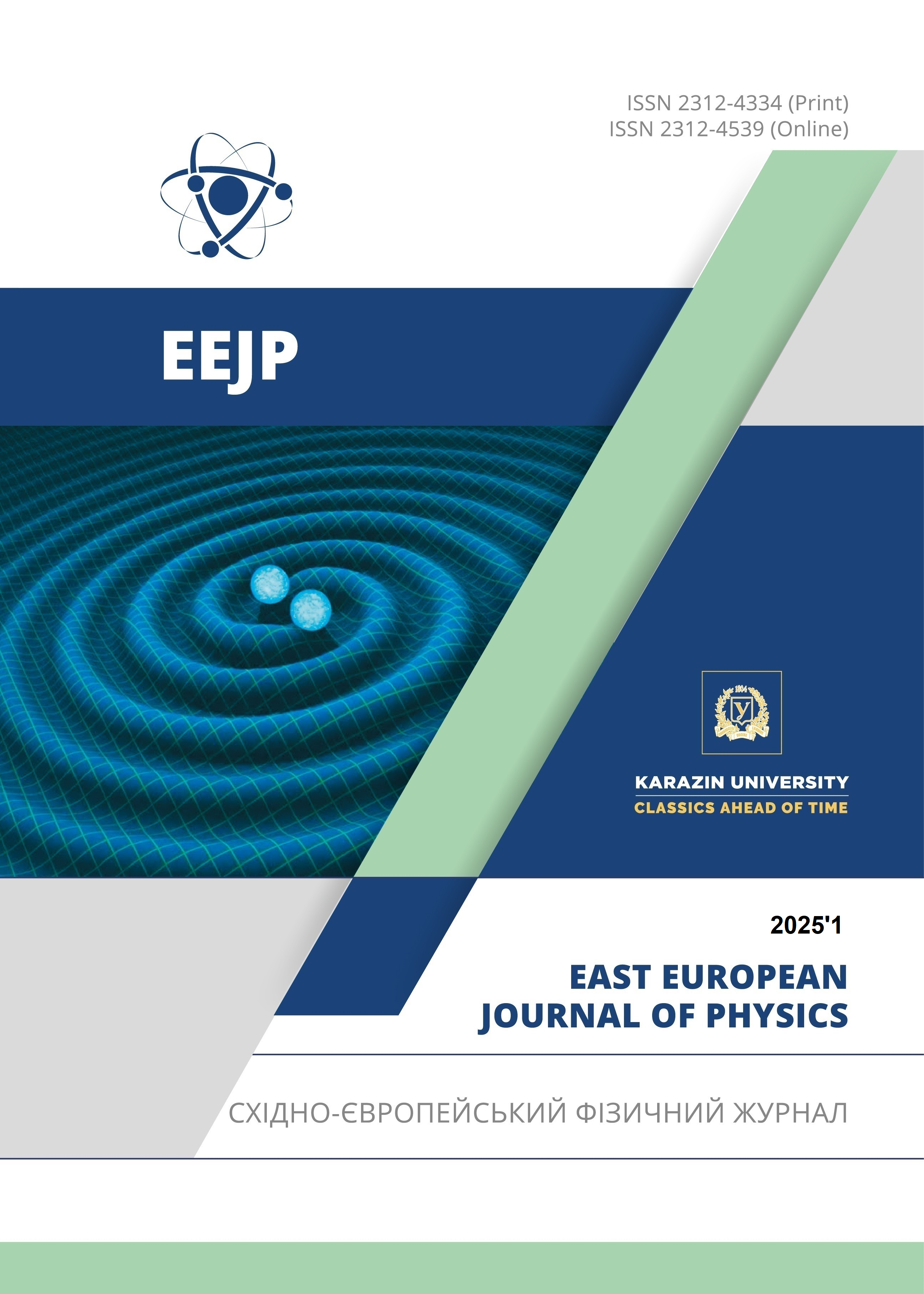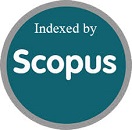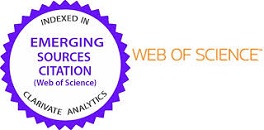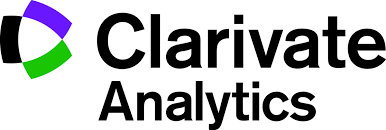Біомагніто-гідродинамічний потік рідини вільямсона та теплоперенос над поверхню, що розтягується: підхід спектральної квазілінеаризації
Анотація
Потiк i теплопередача рiдини Вiльямсона, пiдданої магнiтному полю, аналiзуються та дослiджуються методом спектральної квазiлiнеаризацiї (SQLM). Рiвняння, пов’язанi з iмпульсом i енергiєю, отриманi з рiвнянь Нав’є-Стокса з урахуванням неньютонiвських ефектiв, в’язкої дисипацiї, магнiтних сил i сили Лоренца. Взаємодiя електропровiдної рiдини з магнiтним полем створює силу Лоренца, яка суттєво змiнює поведiнку потоку, застосовуючи силу опору проти швидкостi рiдини. Метод ефективно лiнеаризує нелiнiйнi рiвняння, забезпечуючи точнi рiшення за допомогою спектрального методу. Чисельнi результати пiдкреслюють вплив параметрiв рiдини Вiльямсона, iнтенсивностi магнiтного поля та джерел тепла на поля швидкостi та температури, пропонуючи зрозумiти поведiнку рiдини в промислових застосуваннях, що включають неньютонiвськi рiдини та магнiтнi поля.
Завантаження
Посилання
R.V. Williamson, “The Flow of Pseudoplastic Materials,” Industrial and Engineering Chemistry, 21(11), 1108–1111 (1929). https://doi.org/10.1021/ie50239a035
S. Nadeem, S.T. Hussain, and C. Lee, “Flow of a Williamson fluid over a stretching sheet,” Brazilian Journal of Chemical Engineering, 30(3), 619–625 (2013). https://doi.org/10.1590/S0104-66322013000300019
M.Y. Malik, M. Bibi, F. Khan, and T. Salahuddin, “Numerical solution of Williamson fluid flow past a stretching cylinder and heat transfer with variable thermal conductivity and heat generation/absorption,” AIP Advances, 6(3), o35101 (2016). https://doi.org/10.1063/1.4943398
M.I. Khan, S. Qayyum, T. Hayat, M.I. Khan, and A. Alsaedi, “Entropy optimization in flow of Williamson nanofluid in the presence of chemical reaction and Joule heating,” International Journal of Heat and Mass Transfer, 133, 959–967 (2019). https://doi.org/10.1016/j.ijheatmasstransfer.2018.12.168
I. Zehra, M.M. Yousaf, and S. Nadeem, “Numerical solutions of Williamson fluid with pressure dependent viscosity,” Results in Physics, 5, 20–25 (2015). https://doi.org/10.1016/j.rinp.2014.12.002
K. Subbarayudu, S. Suneetha, and P.B.A. Reddy, “The assessment of time dependent flow ofWilliamson fluid with radiative blood flow against a wedge,” Propulsion and Power Research, 9(1), 87–99 (2019). https://doi.org/10.1016/j.jppr.2019.07.001
A.M. Megahed, “Williamson fluid flow due to a nonlinearly stretching sheet with viscous dissipation and thermal radiation,” Journal of the Egyptian Mathematical Society, 27(1), 12 (2019). https://doi.org/10.1186/s42787-019-0016-y
R.E. Rosensweig, Ferrohydrodynamics, (Cambridge University Press, New York, USA, 1985).
H.I. Andersson, and O.A. Valnes, ”Flow of a heated ferrofluid over a stretching sheet in the presence of a magnetic dipole,” Acta Mechanica, 128, 39–47, (1998). https://doi.org/10.1007/BF01463158
B.A. Pasha, G. Sowmya, V. Ramachandramurthy, and H.M. Nagesh, “Influence of Heat Source on Thin Film Flow of Ferrofluid Past an Unsteady Stretching Sheet,” Journal of Mines Metals and Fuels, 71(10), 1518–1525 (2023). https://doi.org/10.18311/jmmf/2023/35812
E.E. Tzirtzilakis, “A mathematical model for blood flow in magnetic field,” Physics of Fluids, 17(7), 077103 (2005). https://doi.org/10.1063/1.1978807
M.R.D. Garmroodi, A. Ahmadpour, M.R. Hajmohammadi, and S. Gholamrezaie, “Natural convection of a non-Newtonian ferrofluid in a porous elliptical enclosure in the presence of a non-uniform magnetic field,” Journal of Thermal Analysis and Calorimetry, 141(5), 2127–2143 (2019). https://doi.org/10.1007/s10973-019-09045-3
N.H. Abu-Hamdeh, R.A.R. Bantan, F. Aalizadeh, and A. Alimoradi, “Controlled drug delivery using the magnetic nanoparticles in non-Newtonian blood vessels,” Alexandria Engineering Journal, 59(6), 4049–4062 (2020). https://doi.org/10.1016/j.aej.2020.07.010
N.S. Anagandula, and N.K.S. Reddy, “Velocity and Thermal Slips Impact on the Williamson Fluid Flow above a Stretching Sheet in the Existence of Radiation and Inclined Magnetic Field,” CFD Letters, 16(7), 118–135 (2024). https://doi.org/10.37934/cfdl.16.7.118135
A. Abbas, M.B. Jeelani, A.S. Alnahdi, and A. Ilyas, “MHDWilliamson Nanofluid Fluid Flow and Heat Transfer Past a Non-Linear Stretching Sheet Implanted in a Porous Medium: Effects of Heat Generation and Viscous Dissipation,” Processes, 10(6), 1221 (2022). https://doi.org/10.3390/pr10061221
M. Rashid, K. Ansar, and S. Nadeem, “Effects of induced magnetic field for peristaltic flow of Williamson fluid in a curved channel,” Physica a Statistical Mechanics and Its Applications, 553, 123979 (2020). https://doi.org/10.1016/j.physa.2019.123979
M.V. Krishna, and B.V. Swarnalathamma, “Convective heat and mass transfer on MHD peristaltic flow of Williamson fluid with the effect of inclined magnetic field,” AIP Conference Proceedings, 1728, 020461 (2016). https://doi.org/10.1063/1.4946512
A.M. Obalalu, S.O. Salawu, O.A. Olayemi, O.A. Ajala, and K. Issa, “Analysis of hydromagnetic Williamson fluid flow over an inclined stretching sheet with Hall current using Galerkin Weighted Residual Method,” Computers & Mathematics With Applications, 146, 22–32 (2023). https://doi.org/10.1016/j.camwa.2023.06.021
Y.-X. Li, M.H. Alshbool, Y.-P. Lv, I. Khan, M.R. Khan, and A. Issakhov, “Heat and mass transfer in MHD Williamson nanofluid flow over an exponentially porous stretching surface,” Case Studies in Thermal Engineering, 26, 100975 (2021). https://doi.org/10.1016/j.csite.2021.100975
M. Dhivua, and K. Vajravelu, “Heat transfer characteristics of a Williamson fluid flow through a variable porosity regime,” International Journal of Ambient Energy, 44(1), 2553–2568 (2023). https://doi.org/10.1080/01430750.2023.2258378
M.S. Anwar, M.S. Alqarni, and M. Irfan, ”Exploring the marvels of heat transfer: ”MHD convection at a stagnation point in non-Newtonian fluid with yield stress and chemical reactions,” Chinese Journal of Physics, 89, 1299-1308 (2024). https://doi.org/10.1016/j.cjph.2024.01.030
L.N. Trefethen, Spectral Methods in MATLAB, (Oxford University Mathematical Institute, Oxford, United Kingdom, 2000). [23] D. Srinivasacharya, and K.H. Bindu, “Entropy generation in a micropolar fluid flow through an inclined channel with slip and convective boundary conditions,” Energy, 91, 72–83 (2015). https://doi.org/10.1016/j.energy.2015.08.014
R.A. Alharbey, H. Mondal, and R. Behl, “Spectral Quasi-Linearization Method for Non-Darcy Porous Medium with Convective Boundary Condition,” Entropy, 21(9), 838 (2019). https://doi.org/10.3390/e21090838
H. Mondal, and S. Bharti, “Spectral Quasi-linearization for MHD Nanofluid Stagnation Boundary Layer Flow due to a Stretching/Shrinking Surface,” Journal of Applied and Computational Mechanics, 6(4), 1058–1068 (2020). https://doi.org/10.22055/jacm.2019.30677.1766
N. Rai, and S. Mondal, “Spectral methods to solve nonlinear problems: A review,” Partial Differential Equations in Applied Mathematics, 4, 100043 (2021). https://doi.org/10.1016/j.padiff.2021.100043
W. Al-Kouz, C.S. Reddy, M.S. Alqarni, and B. Mahanthesh, “Spectral quasi-linearization and irreversibility analysis of magnetized cross fluid flow through a microchannel with two different heat sources and Newton boundary conditions,” The European Physical Journal Plus, 136(6), 645 (2021). https://doi.org/10.1140/epjp/s13360-021-01625-3
E.E. Tzirtzilakis, and G.B. Tanoudis, “Numerical study of biomagnetic fluid flow over a stretching sheet with heat transfer,” International Journal of Numerical Methods for Heat & Amp Fluid Flow, 13(7), 830–848 (2003). https://doi.org/10.1108/09615530310502055
H. Muzara, and S. Shateyi, ”Magnetohydrodynamics Williamson Nanofluid Flow over an Exponentially Stretching Surface with a Chemical Reaction and Thermal Radiation,” Mathematics, 11, 2740 (2023). https://doi.org/10.3390/math11122740
A. Srinu, K.S. Reddy and N. Amar, ”Radiation and inclined magnetic field effects on Williamson fluid flow above a stretching sheet in the existence of velocity, thermal, and concentration slips”, Partial Differential Equations in Applied Mathematics, 9, 100611 (2024). https://doi.org/10.1016/j.padiff.2023.100611
M. Faizan, M. Ajithkumar, M.V. Reddy, M.A. Jamal, B. Almutairi, N.A. Shah, and J.D. Chung, ”A theoretical analysis of the ternary hybrid nano-fluid with Williamson fluid model,” Ain Shams Engineering Journal, 15, 102839 (2024). https://doi.org/10.1016/j.asej.2024.102839
T. Salahuddin, and Muhammad Awais, ”Thermal and solutal transport by Cattaneo-Christov model for the magnetohydrodynamic Williamson fluid with joule heating and heat source/sink,” Heliyon, 10, e29228 (2024). https://doi.org/10.1016/j.heliyon.2024.e29228
Z. Liu, S. Li, T. Sadaf, S.U. Khan, F. Alzahrani, M.I. Khan, and S.M. Eldin, ”Numerical bio-convective assessment for rate type nanofluid influenced by Nield thermal constraints and distinct slip features”, Case Studies in Thermal Engineering, 44, 102821 (2023). https://doi.org/10.1016/j.csite.2023.102821
Авторське право (c) 2025 Кайравадi Суреш Бабу, Вангала Сугунамма, Вамсi Крiшна Нарла

Цю роботу ліцензовано за Міжнародня ліцензія Creative Commons Attribution 4.0.
Автори, які публікуються у цьому журналі, погоджуються з наступними умовами:
- Автори залишають за собою право на авторство своєї роботи та передають журналу право першої публікації цієї роботи на умовах ліцензії Creative Commons Attribution License, котра дозволяє іншим особам вільно розповсюджувати опубліковану роботу з обов'язковим посиланням на авторів оригінальної роботи та першу публікацію роботи у цьому журналі.
- Автори мають право укладати самостійні додаткові угоди щодо неексклюзивного розповсюдження роботи у тому вигляді, в якому вона була опублікована цим журналом (наприклад, розміщувати роботу в електронному сховищі установи або публікувати у складі монографії), за умови збереження посилання на першу публікацію роботи у цьому журналі.
- Політика журналу дозволяє і заохочує розміщення авторами в мережі Інтернет (наприклад, у сховищах установ або на особистих веб-сайтах) рукопису роботи, як до подання цього рукопису до редакції, так і під час його редакційного опрацювання, оскільки це сприяє виникненню продуктивної наукової дискусії та позитивно позначається на оперативності та динаміці цитування опублікованої роботи (див. The Effect of Open Access).








